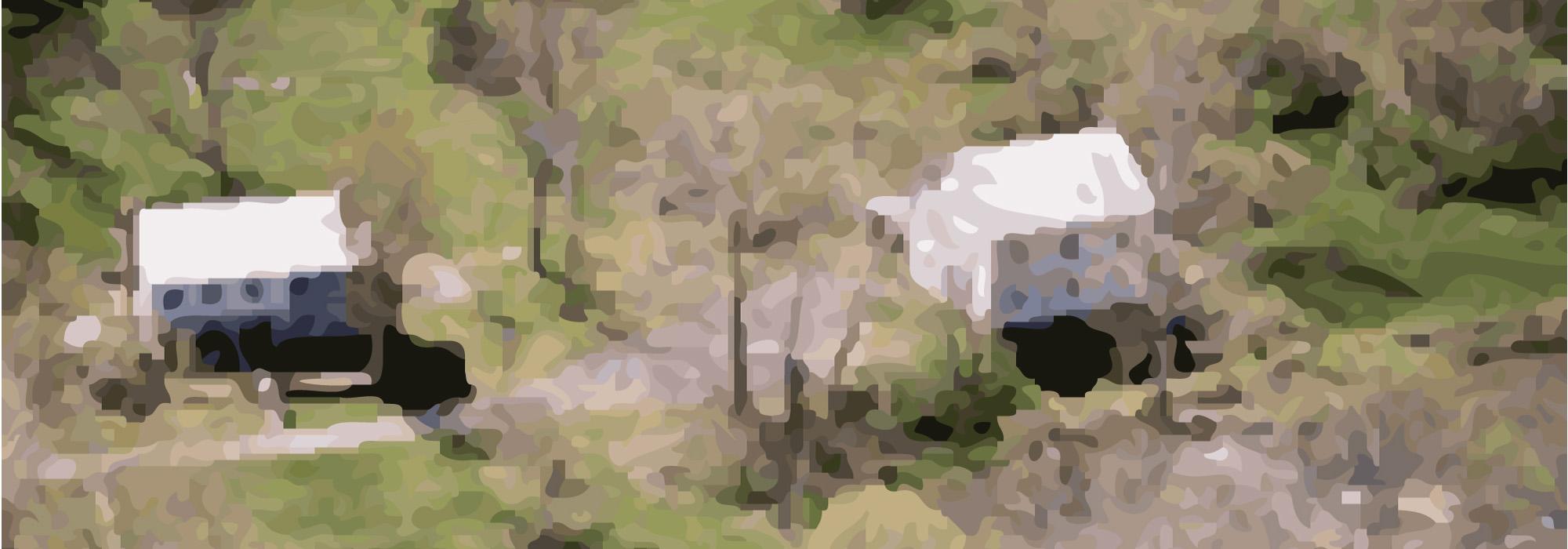It Takes One: David William Blake
I am just a regular guy with a natural appreciation of history who bought a Virginia farm to breed horses. I did not anticipate the preservation of a cultural landscape, but I have begun to realize its importance and potential over the last four years.
How would you define a cultural landscape?
A cultural landscape consists of the cumulative effects or impacts to the natural landscape caused by human activity or occupation over a period of time. Decisions involving commerce, agriculture, battle, industry, innovation, invention, as well as every day life often involve change to the natural environment. Such conditions may be influenced by a myriad of institutions and factors including law, government, religion, ethnicity, or even weather. Independent scholarly research and informed interpretation by each discipline/methodology provides insight for these sometimes complex relationships. However, it is only when these fields are integrated in the study of a particular site that we begin to understand any complex cultural landscape. I was not aware of this until I began my own historical research about my farm and surrounding region. This inquiry made it plain that the benefit of expert opinion was needed for subject matter with which I had no previous experience.
Why did you get involved in the landscape that was threatened in your community?
While I was learning more about the significance of the place I live, I began to wonder what was planned for adjacent properties in the future. I knew well what was planned for the land I owned which was not threatened but knew little of regional long-term plans. I was also beginning to view this place as an important historic site if considered in a larger context than commonly understood. Because little research had been conducted regarding the history of this farm and its relationship historically to adjacent properties, there were only plans to preserve a very small portion of this cultural landscape. The Virginia Department of Transportation intended to preserve the site by using something called mitigation.
How did your understanding of this landscape change as a result of your advocacy efforts?
My efforts were initially devoted to historical research and discussions with local historians about the findings. I began to research the Love family, who had been the first owners of the property. I was surprised to find immediately correspondence between them and George Washington, Thomas Jefferson, James Madison, James Monroe, Andrew Jackson, Henry Clay, Patrick Henry, Benjamin Latrobe and countless others. I learned that this family had laid out a village beginning in the 1770's and 80's that had become a hub of industry in the early 19th century. Records showed factories, mills, a distillery, two taverns, an apothecary, church, post office, stage coach Inn, tannery, smithy, cooper, etc. I knew that there were about six old buildings on one street located beyond my front gate that had been designated a small National Register Historic District (NRHD). The district report inaccurately described the buildings and village to be of the late 19th and early 20th centuries yet the cast iron marker before the stone tavern read that it had accommodated Lafayette. I also questioned the origin of the many additional buildings and structures surrounding the NRHD. These had been covered with plastic siding or left in neglect strangely amidst a number of old stone foundations. No research had been conducted to determine the significance or relationship of these structures to the NRHD so I went to our local court house and began pulling deeds to answer these questions. I soon found the Town’s charter, list of the original property owners, first act of the town’s trustees, "48 lot plan" and record of water-powered industrial sites. I was amazed to learn of an incredibly vibrant town, once thriving on this very site, so I began to pull chains of titles for deeds to the 18th century, enrolled in courses to learn more about early deeds and how to lay out metes and bounds descriptions with a compass. I began to discuss these findings more with my neighbors who shared with me a copy of a Harper’s Weekly magazine article concerning the Civil War Battle of Buckland Mills, 19 October 1863. It included an engraving that showed George Armstrong Custer and federal troops bombing the village of Buckland. I went to the Library of Congress and found the original Alfred Waud sketch from which the engraving had been made and it showed remarkably better detail of the buildings during the war. I was amazed to realize that we still have all but four buildings. More research revealed piles of documents that included period business records, account books, church records, etc.
Did the understanding of others change as well? If so, how?
I met with my neighbors and shared the new information I had learned about the town’s history. I also began to understand their efforts to preserve Buckland for years at the county level. While considering these things together, our understanding of the place we live changed and we are working together as the community of Buckland again.
I called professionals from the fields of landscape, archaeology, architecture as well as historians and Civil War experts to review this information. They, too, were amazed by the amount of surviving buildings, records and especially were surprised to find property owners hell-bent to preserve these resources. The following quotes document change in the understanding of others. C. Allan Brown, Landscape Architect, Landscape Historian, has written "Buckland is the best preserved example of an early Piedmont town in Virginia... A linear village of the type that was once so familiar to early Americans. Many modern urban centers began just as Buckland did, as a modest settlement on the banks of a river, but long ago lost all semblance of their initial physical character. I know of no better place in Virginia suited for the study of everyday life in the early republic." He also noted that Buckland, unlike most towns did not develop along the spine of the main street. Rather minor subsequent development occurred along a route perpendicular to that original road.
William Graham, Architectural Curator, Colonial Williamsburg Foundation has contended that "one of the most important things about Buckland is the landscape that is so fragmentary elsewhere. One of our problems at Williamsburg is that these landscapes were created or recreated in the last century, largely when people were not so interested in the relationship between the parts. The [Virginia] fall line towns of the period, Alexandria, Fredericksburg, Staunton, etc., wiped out the early part of their history.
Their success caused them to grow beyond it. The lack of progress at Buckland in its later period preserved its earliest buildings and one of the reasons we have something at Williamsburg is because it stagnated too. However, the survival rate of traditional building landscape at Buckland is much better than what we have at Williamsburg."
Orlando Ridout V, Senior Architectural Historian, Maryland Historical Trust has written, "Let me say without reservation that in my thirty-year career conducting field survey and documentation work, I have never encountered a small rural village with such a remarkable density of significant resources. The entire 48-lot town plan and town common remains largely intact and most of the streets are still visible in the modern landscape... Buckland is a highly significant resource for Virginia and beyond. Any further degradation of the historic character of the town should be considered unacceptable, and we should recognize that "degradation" extends beyond the need to preserve the significant buildings and archeological resources."
Dr. William Kelso, Ph.D., APVA Director of Archaeology, Jamestown Rediscovery, has written of "the remarkably preserved ancient industrial town of Buckland” and has noted that “to be such an architectural and archaeological time capsule surviving literally in the shadow of suburban Washington D.C. development was particularly encouraging to me. In my opinion, properly protected and researched, Buckland has the unique potential to teach generations to come much about American values, especially the role of free enterprise, in the development and growth of the United States during its founding years between the American Revolution and the Civil War Era. Too often, as at Jamestown, no architectural landscape and few documents survive to help tell significant pieces of the archaeological part of that story as it does at Buckland.
The preservation and research of Buckland can stand as a prime example of how American progress and significantly unique historic places can co-exist as well. While construction and expansion of Rt. 29 through the years fortunately has only taken a small slice off one end of the town so far, in my personal opinion its re-routing and/or down-scaling is essential to allowing Buckland to reach its true potential value as a major American historical, architectural, and archaeological laboratory/site.
What is the message that you would like to give our readers that may inspire them to make a difference?
I would encourage anyone who lives in or near a place that may have early beginnings to go to the local court house and honor the past by researching the history of one's property. I would never have known the rich history of this simple place nor the challenge of carefully preserving this remarkable survival of early America.
Preservation projects of such complexity as Buckland should be driven by interdisciplinary research, in which discoveries made by professionals in one field or discipline direct questions and efforts among scholars from every other field. Indeed, including each of the disciplines traditionally associated with historic preservation - archaeology, architecture and history – is a necessity, but those should be seen as contributing to the broader cultural landscape.
It is also important to note that this process of discovery requires much time and should not be hurried. The secrets of an old landscape are slow to reveal themselves, but there is only one place where it is possible to interpret and experience an event such as Washington crossing the Delaware. When we learn that a particular place contains a high concentration of cultural resources, historical events, etc., shouldn't it be considered that the current zoning determined by the local planning office may not sufficiently assess that cultural value? Perhaps in certain cases, the highest and best use of a place may be realized by preserving it. Economic considerations such as market value do not always consider the long term benefits historic resources can provide the Commonwealth.
At Buckland, it is still possible to experience the natural landscape (hills, river edge, etc.) as well as the cultural imprint upon it. From a hill above the river it is possible to see the entire Village and the fields that surround it, just as General Custer did when he engaged his cavalry with that of General J.E.B.Stuart. Careful study is revealing the various sensibilities involved in creating this landscape. I hope the results assembled by the team of professionals interpreting the full range of historical context at Buckland Virginia might serve as a model for appreciating and understanding cultural landscapes. We must stop rushing forward with salvage archaeology and crisis documentation of historic resources to satisfy only the requirements of Federal and State preservation laws that unfortunately often yield to the pressures and forces of modern development. Edmond Burke wrote, “A healthy civilization exists with three relationships intact. It has a relationship with the present, a relationship with the future and a relationship with the past. When the past feeds and sustains the present and the future you have a civilized society.” I fear we are moving away from this healthy objective when I consider the irony in the nearly successful efforts of the Disney Company to construct a mock 18th century village for people to experience three miles from old Buckland instead of preserving the real McCoy. I hope to be proud of the marks we leave on this cultural landscape.







